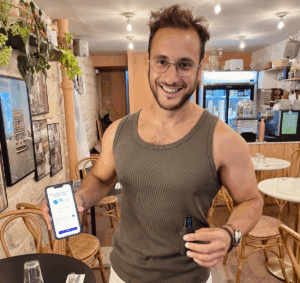Here is my ultimate guide to learn how to optimize the SEO of a website as well for the search engines like Google only for the AI like ChatGPT, Grok, Gemini or Claude.
For years, companies have invested heavily in their social media presence (Instagram, TikTok, Facebook, etc.), often at the expense of their own websites. But with the rapid emergence of AI response engines (ChatGPT, Perplexity, Gemini, Mistral, etc.) and their ability to directly answer users' questions without going through social media, strategic and well-structured web content could well become again the key to visibility.
A new era of SEO is born : both for classic search engines (Google, Bing) And for conversational engines based on artificial intelligence. This AI-driven SEO, which aims to optimize content for artificial intelligence algorithms (like search engines or AI assistants like ChatGPT, Grok or Gemini), is often called AIO (Artificial Intelligence Optimization) or SEO for AI.
In practice, if you plan to visit a city, for example, or buy a new mattress, chances are you're using AI in order to know the best restaurants in a given city, or the best mattresses according to a given constraint, and not just search engines. The question that arises is therefore to know, as an entrepreneur and business leader, How can we talk to AI in order to position ourselves, in one way or another, in the results that it will bring to Internet users?
In this article (which will also serve as a summary of my complete practical guide), I will explain to you:
- Why it's crucial to structure and enrich your content for search engines, but now also for AI.
- How to be understood, chosen and recommended by these new generations of assistants.
- Where to start, with concrete examples, particularly for restaurants, retailers, entrepreneurs and businesses in general.
Guide Summary
1. Social media is no longer enough
If your business relies solely on social media, it depends on ephemeral and closed algorithms. AIs, on the other hand, look for data. reliable, structured and sustainable :
- Your website remains the source of authority No. 1.
- Your Google Business Profile listing has become essential.
- Your content (articles, pages, structured data) becomes the raw material of AI.
AI could therefore put the church back at the center of the village, and reward those who had not lost their independence by publishing their content only on social networks.
2. How AI understands and recommends your business
To answer queries like “Where to brunch in Paris on Sunday?”, AIs cross several types of data:
- Your website : clear, optimized and tagged content.
- Structured data (Schema.org) : information that can be read automatically, and which we will cover in one of the chapters of this guide.
- External reviews and quotes : your online reputation.
- Your social profiles and your Google profile : local information and news.
3. The pillars to be visible and recommended by AI
Here are the main areas to work on (we will detail them step by step in our guide):
A. Optimize your website
- Produce rich, authentic and useful content.
- Technically structure your site so that it is fast, accessible and understandable.
- Use Schema.org tags to enrich data.
B. Mastering your local data
- Create and maintain a fully completed Google Business Profile.
- Get authentic and regular customer reviews.
C. Post strategically on social media
- Relay your site content intelligently.
- Promote your expertise and new developments, without being confined to purely social logic.
D. Take care of your e-reputation
- Be present on quality directories.
- Encourage independent articles, reviews, and testing.
4. Concrete example: a restaurant in Paris
A restaurant wishing to appear in AI suggestions will, for example, need to:
- Have an optimized page on your site with your menu, prices, opening hours, and address.
- Add Schema.org type markup
Restaurant, including kitchen, timetables, geolocation. - Maintain a complete and regularly updated Google listing.
- Get backlinks and positive reviews on Google, TripAdvisor, Yelp, TheFork, etc.
- Post targeted posts on Instagram and Facebook to boost local awareness.
The goal for AI is to provide the user with the most relevant content based on the question asked to this AI. Therefore, it goes without saying that if the user wants to know "the 10 best Mexican restaurants in Paris for a reasonable price for a friendly dinner with friends", the AI will try to provide them with suitable information, i.e. restaurants that are not very expensive, with a good atmosphere, that will be open in the evening and easily accessible in Paris to allow all guests to get there.

From then on, it's a matter of sending the right information to the AI, so as not to be wrongly suggested, which could lead to "casting errors", such as breakfast at the Ritz when you were looking for brunch.
5. Towards a complete practical guide
Now, it's the websites, well-structured data, and authentic content that could make the difference, perhaps more than just Instagram likes. Classic SEO is evolving into a Conversational SEO where being understood by AI becomes a strategic priority for any business.
In order to see things more clearly, and to work little by little on improving your online presence with regard to AI, I wrote this guide entirely dedicated to optimization for Artificial Intelligence, in order to help those who live off the fruit of their work, not to miss the turn of what is called Artificial Intelligence Optimization (AIO), in other words to be able to be recommended, in one way or another, by tools like ChatGPT.
Now that the introductory chapter is finished, I'll let you read the rest of my guide, starting with the first chapter: Understanding Artificial Intelligence Optimization (AIO) and Conversational SEO.
👇 Continue with the next chapter:
Chapter 1 – Building an AI-friendly website





